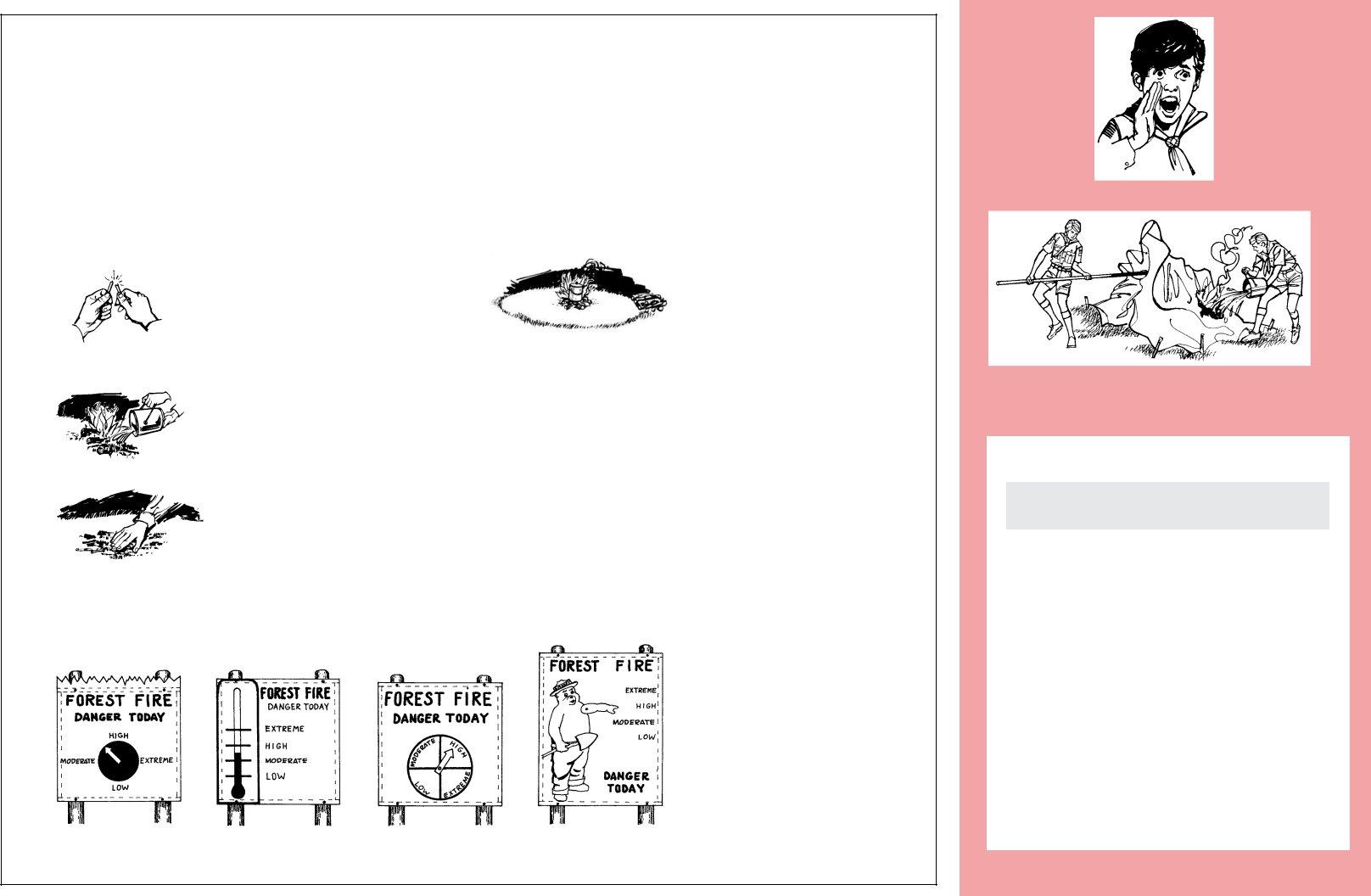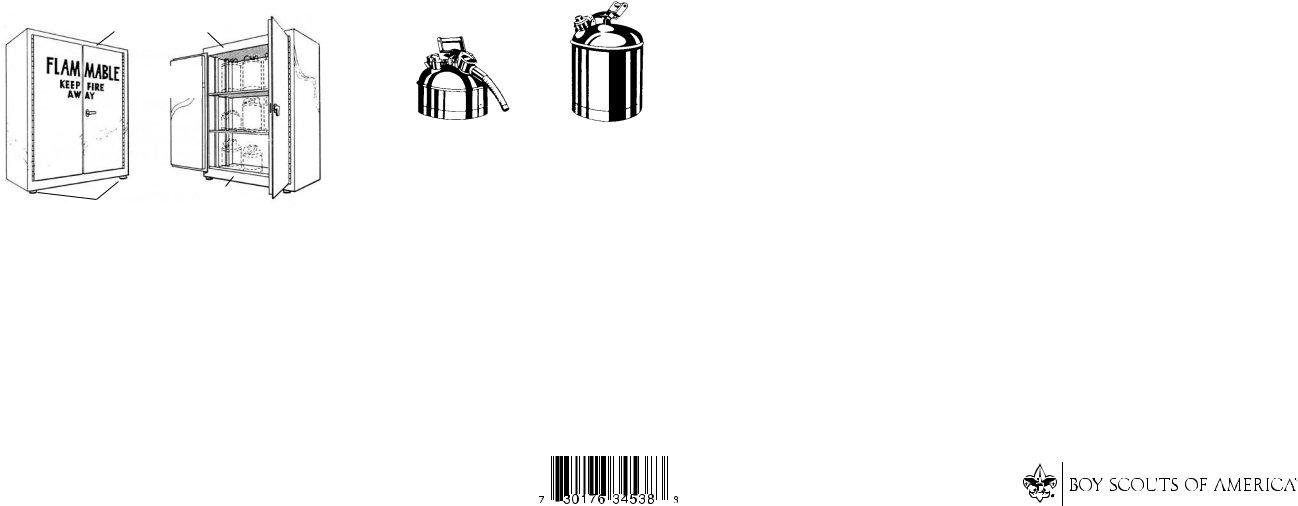The right fire-protection system can mean the difference between a safe work environment and one that endangers both your business's assets and its employees. To ensure that procedures are properly implemented, Unit Fireguard Chart Form is commonly used throughout the workplace. This form is designed to make it easier to track safety compliance across fire safety regulations while also providing immediate notification of any changes in policies or observed violations. In this blog post, we will look at how you can use Unit Fireguard Chart Forms in your workplace for improved safety compliance and faster incident response times when a problem arises.
| Question | Answer |
|---|---|
| Form Name | Unit Fireguard Chart Form |
| Form Length | 2 pages |
| Fillable? | Yes |
| Fillable fields | 27 |
| Avg. time to fill out | 5 min 54 sec |
| Other names | bsa fireguard plan, fireguard 5 000 gallon ast chart, bsa unit firegurard plan 61620, bsa unit fireguard chart |

UNIT FIREGUARD CHART
Fill out and post this chart on your campsite bulletin board.
_______________________________________________ |
_______________________________________________ |
Troop |
Troop fire warden |
_______________________________________________ |
_______________________________________________ |
Camp |
Troop campsite |
Unit Campsite
Fire Prevention Assignments
First Day ________________________ |
Equipment Checked |
Date |
|
___________________________ Patrol |
|
|
We will prevent fires by breaking matches in two after using.
Putting fires COLD OUT with water.
Feeling with fingers to test heat.
_________________________________________________
Dates
FLAMMABILITY WARNING
CAMPING SAFETY RULES
NO TENT MATERIAL IS FIREPROOF, AND IT CAN BURN WHEN EXPOSED TO HEAT OR FIRE. FOL- LOW THESE RULES:
• Only flashlights and
•
• Donotpitchtentsnearopenfire.
• Do not use flammable chemicals near tents: charcoal lighter, spray cans of paint, or bug killer and repellent.
• Be careful when using electricity and lighting in tents.
• Alwaysextinguishcookingandcampfiresproperly.
• Obeyallfirelaws,ordinances,andregulations.
• Keep campers informed on a daily basis of your camp’s fire danger.
Clearing all burnable material 4 to 6 feet away from the fires or as required by local law.
In the case of Cub Scouts, they should immediately seek adult help, sound the alarm by yell- ing, “Fire!” and stay away from attempting to fight any camp fire. If adult help is not readily available, the Cub Scout should continue to sound the alarm, send a runner for help, and/or dial the camp office or 911.
________________________________ |
|
|
|
Fire Warden |
|
|
|
Second Day ______________________ |
Equipment |
|
|
Date |
Checked |
||
___________________________ Patrol |
|||
________________________________ |
|||
Fire Warden |
|||
|
|
||
Third Day ________________________ |
Equipment |
|
|
Date |
Checked |
||
___________________________ Patrol |
|||
________________________________ |
|||
Fire Warden |
|||
|
|
||
Fourth Day _______________________ |
Equipment |
|
|
Date |
Checked |
||
___________________________ Patrol |
|||
________________________________ |
|||
Fire Warden |
|||
|
|
||
Fifth Day ________________________ |
Equipment |
|
|
Date |
Checked |
||
___________________________ Patrol |
|||
________________________________ |
|||
|
VARIOUS TYPES OF FIRE DANGER SIGNS IN CAMP
|
|
|
|
|
|
|
|
|
|
|
|
|
|
|
|
|
|
|
|
Fire Warden |
|
|
|
|
|
|
|
Sixth Day ________________________ |
Equipment |
|
|
Date |
Checked |
||
___________________________ Patrol |
|||
________________________________ |
|||
Fire Warden |
|||
|
|
||
|
|
|
|
Seventh Day _____________________ |
Equipment |
|
|
Date |
Checked |
||
___________________________ Patrol |
|||
________________________________ |
|||
Fire Warden |
|||
|
|
||
|
|
|
SOUND ALARM
DROPTENTS(CANVASONLY)IFNECESSARY
AND SAFE TO DO SO
IN CASE OF FIRE
REPORTING AND ASSEMBLY INSTRUCTIONS
At some camps local changes are made in these suggested pro- cedures. All exceptions, however, should be made on the recom- mendation and with the approval of local fire authorities.
IN A UNIT CAMPSITE
1.Sound the alarm by yelling “Fire!” and then notify the first adult you see, then report to a camp officer or the camp fire warden.
2.Extinguish a fire only if it can be done quickly and easily.
3.When the central alarm is sounded to warn the camp, quickly mobi- lize in your unit. Move to your preassigned point immediately and await directions.
4.A runner reports to the camp office for instructions from the camp fire warden.
5.In the event of a tent fire, you can douse it with water or sand, or sim- ply stand back and let professionals fight the fire.
OUTSIDE UNIT CAMPSITE
1.If you discover a fire anywhere in camp, report immediately to the camp office so the alarm may be sounded and fire authorities notified.
2.Camp fire warden sounds the central alarm, and your unit follows steps 3 and 4 above.
3.Remember: Campers should not be directly involved in the fire fighting process except for fires that can be quickly and easily extinguished.
In case of a fire in our campsite, we will notify ____________________
and follow the instructions of our unit fire warden. |
Camp fire warden |
|

Control of Flammable/Combustible Liquids and Gases in Camp
Because serious accidents can happen in connection with the use of liquid fuel, propane, butane, etc., in lanterns and stoves and as a result of igniting fires with liquid starters, adult supervision is required when chemical fuels are being used for lighting and cooking. Local councils have the option of restrict- ing the use of
• Knowledgeable adult supervision must be provided when Scouts are involved in the storing, handling, and filling of stoves or lanterns or the lighting of chemical fuels.
•
• Kerosene, gasoline, or liquefied
may, when permitted, be used inside permanent buildings or for outdoor lighting. When used indoors, there must be adequate ventilation. Strict adherence to the safety standards and the instructions of the manufacturers in fueling and lighting such stoves and lanterns must be carried out under the direct supervision of a responsible and knowledgeable adult.
• Empty
• The use of liquid fuels for starting any type of fire is prohibited. This includes damp wood, charcoal, and cer-
CONSTRUCTION IS
TYPICALLY USED.
DOOR
MECHANISM
emonial campfires.
• Space heaters that use chemical fuels consume oxygen and must be used only in
Bulk Storage and Practices
Storage of liquid fuel and other flammables is a camp main- tenance function. Filling tanks for motors, vehicles, and motor- boats should always be handled by someone qualified by age and training for this responsibility. Similar responsible handling and control are prescribed for the limited use of kerosene. Use kerosene only for outside night lights and stationary heating stoves (not portable). Both gasoline and kerosene should be kept in
USE SAFETY CANS ONLY!
HOW YOUR UNIT FIREGUARD PLAN WORKS
DUTIES
When you arrived at camp, you were oriented and trained in the use of the unit fireguard plan. It is your responsibility as a unit leader to train your Scouts in fire prevention, fire detection, reporting, and fire control. Only implement fire control techniques that can be done quickly and easily.
Study the procedures outlined on this chart and then train your staff and youth members. Post the chart for all to see and follow. At some camps local changes are made in these suggested procedures. All exceptions, however, should be made on the written recommendation and with the approval of local fire authorities.
Organize to make the fireguard plan work by appointing capable fire wardens and deputies.
FIRE WARDENS AND DEPUTIES
As responsible Scouts appointed by their adult leader, the unit fire warden and his deputy are in charge of training, know where fire equipment is located, and are familiar with the unit fireguard chart. They instruct all unit fire wardens and Scouts in the operation of the camp fireguard plan. They conduct annual inspections of fire extinguishers and check to be sure all cooking fires, heat- ing fires, and campfires are out at night or when no one is attending or monitoring the fire during the day. Unit fire wardens and deputies conduct fire drills at least once a week and follow the direction of the camp fire warden. They receive reports related to fire hazards daily from the duty fire warden.
Every boy in the unit should feel responsible for fire prevention, but the unit fire patrol for each day must be alert and ready to evacuate and account for everyone in case of fire emergency or drill.
If a small fire breaks out, the person discovering it should take immediate action, whether or not he is on the fire patrol for the day. Time is the most important element in the sup- pression of a fire. Some examples of fire control techniques are:
• Immediately send someone to seek assistance, send a runnerfor help, and/or dial the
camp office or 911.
• Dousefirewithwaterorsand.
• Smotherfirewithalid.
• In the event of a tent fire (canvas only), simply kick out the end tent poles if it can be
done safely.
LEAKPROOF SILL
LEVELING FEET
REMEMBER: Campers should not be involved in the fire fighting process except for fires that can be quickly and easily extinguished.
In making daily inspections of the unit campsite, the unit fire warden should follow the
Will your camp be there next season? This is a good ques- tion to ask at the close of each camping season as you pack away equipment and leave. In fairness to next year’s camp- ers, do everything that can be done to ensure the safety of camp equipment and camp timber.
Fall, with its dry, dead leaves that often bank high around camp buildings is, in many sections of the country, the most dangerous fire season of the entire year. Spring is another bad time.
Here is a checklist of things to do at all times to be sure that your camp is fireproof
1.Destroy greasy rags.
2.Dispose of all combustible refuse and trash safely.
3.Be sure that doors and shutters are strong enough to keep out trespassers, vandals, or thieves.
4.Stow away firewood and loose equipment that might be used by trespassers.
5.Clear away dead grass or trees, ferns, leaves, bushes, straw piles, and trash from buildings.
6.Clean grease traps and dispose of the grease by burning it at a safe place or burying it in mineral earth.
7.Be sure the camp is ready for winter use. Check fuels, wall and floor protection around heaters, and protecting screens for fireplaces. Inspect location of fire pails, fire extinguishers, and mobile
8.Develop a fire prevention plan in accordance with OSHA standard 29 CFR 1910.139.
SKU 33691
a guide. Campsite equipment will vary according to your camp. Results of the daily inspection should be posted on the chart in the space provided.
PATROL FIRE WARDEN
The patrol leader is responsible for training his patrol in the unit fireguard plan and leading the unit in practice evacuation and fire prevention.
He checks daily to be sure all members are preventing fires and are prepared in case a fire breaks out. He makes sure and
flames are not permitted in or near tents. He shows patrol members how to drop tents (canvas only) in case of fire. Intheeventofatentfire(canvasonly),youcansimplykickouttheend
tent poles if it can be done safely and let professionals fight the fire.
33691 |
2010 Printing |